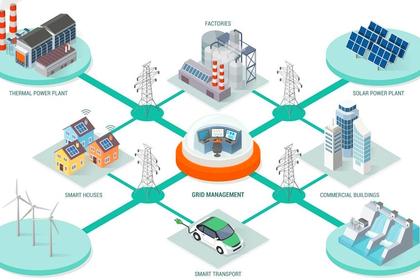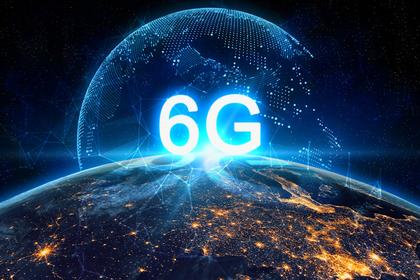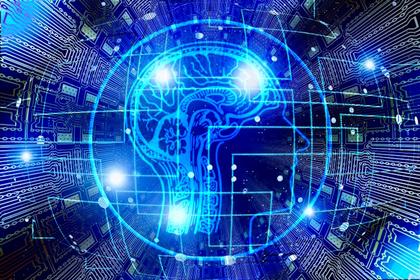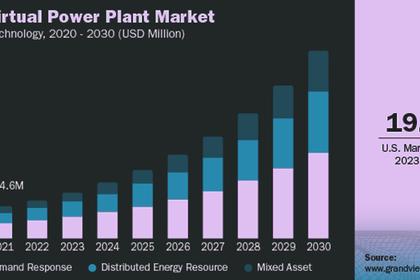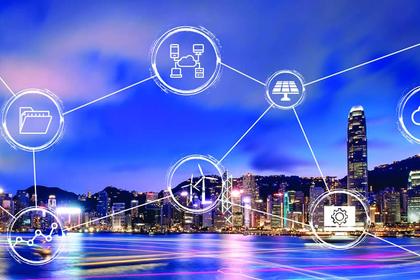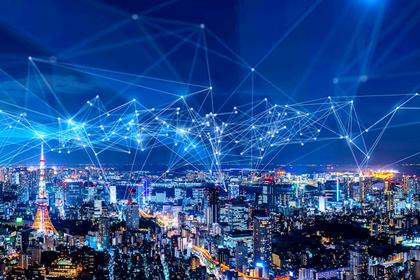
ENERGY TECHNOLOGIES & CONSUMERS

Industry Technical Writing and Editing, TPGR Solutions, LLC
ENERGYCENTRAL - Apr 8, 2024 - The Energy Utility Grid is expanding in technology use and energy consumer population reliance. Energy Utility Grids require an exponential growth compatibility factor to keep pace with advancing technology and rising energy demand by the energy consumer population. Questions arise about the capability of Energy Utility Grids to meet expectations of technology application and integration while balancing energy supply and demand within cost-effective margins. Grid failures, off-grid energy consumers, and non-standardized technology applications are some problems creating barriers to Energy Utility Grid growth. For Energy Utility Grid growth and expansion to succeed, technology effectiveness, energy consumer population use monitoring, and energy distribution efficiency and reliability must remain amidst new technology applications, energy demand fluctuations, and external environment and market elements.
Technology effectiveness is an element to embrace when discussing the Energy Utility Grid growth. When talking about the Energy Utility Grid expansion, the application of technology provides a window into the structures and functions the Energy Utility Grid is utilizing to adapt to better service and broader reach as the Energy Utility Grid strives to modernize and retain cost-effectiveness. Reliance on updated technology to grow the Energy Utility Grid is half the job of finding solutions to Energy Utility Grid upkeep dilemmas. Artificial Intelligence (AI), SMART Grid platforms, and Distributed Energy Resource (DER) integrations are crucial technology investments expanding the Energy Utilities’ Grids’ performance and increasing stability, flexibility, and resilience.
AI’s ability to learn from large amounts of data and respond to complex scenarios makes it particularly well suited to the task of keeping the grid stable. Bringing energy consumers personalized integration with rapid decision-making capabilities, AI enhances crucial Energy Utility Grid functions and predicts disasters before they occur. Electric Vehicles (EVs) and other energy use (such as commercial Wi-fi), not easy to monitor and track on the Energy Utility Grid, are compatible with AI Energy Utility Grid interfaces. These AI capabilities make AI a technological development essential for working the modern-day SMART Grid as an additional Energy Utility Grid facet embracing hard-to-control energy demand and emergencies.
NIST defines SMART Grids as a modernized grid that enables bidirectional flows of energy and uses two-way communication and control capabilities that will lead to an array of new functionalities and applications. SMART Grid platforms currently function individually within the partial SMART Grid network as all Energy Industry Utilities nationwide are not SMART Grid equipped. Within the Energy Industry, the goal is for a unilateral SMART Grid expansion encompassing every Energy Utility with a common set of existing standards. This vision for the future of the SMART Grid currently relies on individual Energy Utilities embracing SMART Grid operations and forming small platforms that can connect to an overarching SMART Grid once standards and network connectivity are applied. SMART Grid platforms will eventually become a single SMART Grid as the Energy Utility Grid evolves. This merging of SMART Grid platforms will enhance energy consumer population connectivity for better customer service, energy demand balance, and monitoring.
Distributed Energy Resources (DER), small-scale power generation sources located close to where electricity is used (e.g., a home or business), provide an alternative to or an enhancement of the traditional electric power grid. DER integrations with Energy Utility Grids provide emergency power, lower energy costs, and higher energy transmission efficiency. Instead of off-grid energy consumerism, DERs utilize Energy Utility Grid connections to add energy renewables to the Energy Utility Grid or to provide stand-by extra power. DERs take pressure off the Energy Utility Grid during emergencies and at peak times of energy high demand. Because of the absorption of DERs into the Energy Utility Grid networks, more energy consumers are Energy Utility Grid customers, and the remote stand-alone energy consumer populations can integrate with the Energy Utility Grid for energy production reliability and stability. (Recycling energy, which is recovering lost energy for user purpose, is also enhanced by DER source installation.)
Energy consumer population monitoring and energy distribution efficiency and reliability seem like easy goals to achieve. Climate change, population growth, and adding energy renewables to the monitoring and distribution functions of the Energy Utility Grids reflect challenges facing the Energy Industry in sustaining these goals as the energy consumer population's reliance on Energy Utility Grids continues to increase. Facing these challenges requires more than adding new technologies. For the Energy Utility Grid stability, moving planning strategies, training, and research contribute to solutions and best practices for Energy Utility Grid essential growth.
Climate change is an inevitable variable influencing energy demand fluctuations in the increase and decrease of energy use. For each 1 °C of warming, the mean city-scale space-conditioning EUI experiences an average increase/decrease of ~14%/ ~ 10% for space cooling/heating. This uneven scale of energy demand conditions across seasonal warming trends leads to blackouts, rising energy costs, and Energy Utility Grid equipment maintenance issues. Staggering energy use schedules across peak hours and targeting energy storage for added Energy Utility Grid growth resourcing keep the Energy Utility Grid from collapsing and from uneven downtime wearing on the Energy Utility Grid resiliency. This type of planning and resourcing expands the Energy Utility Grid’s energy distribution efficiency while expanding the functional capabilities of the Energy Utility Grid.
Population growth and especially the migration of more of the energy consumer population to urban areas has laid a burden on the Energy Uiltilty Grid. “Domestic migration patterns are changing, and the impact on counties is especially evident,” said Lauren Bowers, chief of the Census Bureau’s Population Estimates Branch. Energy Utility Grid growth requirements have responded to the increased need for centralized energy demand and communications for energy monitoring by establishing more data centers and expanding the use of alternate forms of energy, such as renewables. With the county population increases in the U.S. rising to 60% in 2024, Energy Utility Grid facilities large enough to handle concentrated area energy draws are critical to providing appropriate coverage for energy use by enlarged populous areas. As new Energy Utility Grid data centers arise, the Energy Industry employment levels increase. Training programs on SMART Grids and AI interfacing for increased energy consumer/energy use communications are considerations as a serious part of the Energy Utility Grid growth factors. The Energy Utility Grid growth is not only about programs, equipment, and structures- Energy Utility Grid expansion also includes hiring people and increasing the number of Energy Utility Grid professionals.
Adding renewable energy sources to the Energy Utility Grid provides distribution control, lowers energy consumer rates, and unlocks the potential of recycled energy and energy storage to grow the Energy Utility Grid capacity. While a data center can be built in just one year, it can take five years or longer to connect renewable energy projects to the grid. Renewable energy distribution and transmission generation connect to the Energy Utility Grid differently. Distribution generation is small-scale and comes on the Energy Utility Grid notice at the point energy serves. Transmission generation is large-scale Energy Utility level generation disbursed through power transmission lines. These two types of renewable energy integration with the Energy Utility Grid rely on energy storage backup using generators or storage facilities, respectively. Renewable energy provides about 20% of U.S. energy needs and is involved in wholesale and retail values. Wholesale markets move renewable stored energy between Energy Utilities, while retail markets move renewable energy directly to the energy consumer. The Energy Utility Grid loses renewable energy integration when stored renewable energy is moved to the retail market and must rely on distribution generation to reconnect the Energy Utility Grid validity. Storage and recyclable energy alternatives will become a part of the Energy Utility Grid-controlled energy use as research finds new ways efficiently harnessing renewable energy on the Energy Utility level. This switch to wholesale market precedence is best for the Energy Utility Grid growth, and preventing retail energy storage protects the energy consumer from maintenance, energy use loss, and the problem of uneven energy distribution.
Factors in the Energy Utility Grid’s growth involve two facets of the Energy Industry, technology and energy consumer populations. Technology developments successfully applied to the Energy Utility Grid to expand efficiency, reliability, and stability include AI, SMART Grid platforms, and DERs. One technology implemented as a stand-alone solution facilitating the Energy Utility Grid growth is not enough to meet the requirements of a fully responsible, adaptable, and resilient modern Energy Utility Grid. Energy consumer population considerations in the Energy Utility Grid growth options encompass climate change, population growth, and renewable energy source incorporation into regular energy production. Each energy consumer population consideration weighs in with unique concerns affecting distribution, demand, and communication integration. When exploring the needs and possibilities surrounding the Energy Utility Grid growth, an examination of technological applications and energy consumer population use reveals the potential in place for Energy Utility Grid growth and exposes the current situational status of the Energy Utility Grid as the Energy Industry strives toward a complete Energy Utility Grid expansion solution.
-----
This thought leadership article was originally shared as part of the Energy Central Special Issue - Navigating the Future: Investing in the Grid - March/April 2024 SPECIAL ISSUE. The communities are a place where professionals in the power industry can share, learn and connect in a collaborative environment. Join Energy Central today and learn from others who work in the industry.
-----
Earlier:

